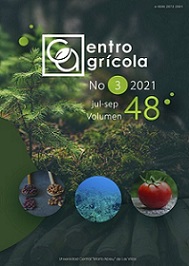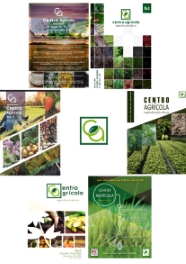RESEARCH ARTICLE
Soil macrofauna in four farms in conversion to ecological production in the Municipality Cruces, Cuba
Macrofauna del suelo en cuatro fincas en conversión hacia la producción agroecológica en el Municipio Cruces, Cuba
Itania Maria Fernández Terry1, Leónides Castellanos González2, Mario Fuentes Gallardo3, Pedro Cairo Cairo4, Nilda Rajadel Acosta5, Renato de Melo Prado6
1-Empresa Agropecuaria Mal Tiempo. Batey Central Mal Tiempo, Cienfuegos, Cuba, C.P. 55100.
2-CETAS (Centro de Estudios para la Transformación Agraria Sostenible). Universidad de Cienfuegos, Carretera a Rodas, km 4, Cienfuegos, Cuba.
3-Departamento de Suelos. Delegación Provincial Agricultura. MINAG Km 4½ Carretera de Palmira. Cienfuegos, C.P. 55100 .
4-Centro de Investigaciones Agropecuarias, Facultad de Ciencias Agropecuarias, Universidad Central “Marta Abreu” de Las Villas. Carretera a Camajuní 5 ½ km, Santa Clara, Villa Clara, Cuba, 54830.
5-Facultad de Ciencias Agrarias Universidad de Cienfuegos. Universidad de Cienfuegos (UCF).Carretera a Rodas Km 4, Cuatro Caminos, Cienfuegos, Cuba, C.P. 55100.
6-Facultad de Ciencias Agrarias y Veterinarias, Campus Jabotoicabal, UNESP, Via de Acesso Prof. Paulo Donato Castellan, s/n - Vila Industrial, Jaboticabal - SP, 14884-900, Brasil.
E-mail: This email address is being protected from spambots. You need JavaScript enabled to view it.; This email address is being protected from spambots. You need JavaScript enabled to view it.
ABSTRACT
The research was conducted in four farms Agricultural Company "Bad weather" town of Cruces, Cienfuegos, who are in the process of conversion to ecological production. In order to evaluate the macrofauna populations present in the soil at different depths in the same areas of fruit trees, where crops are interspersed developed. In each farm were assessed total of individuals for which samples were taken in two seasons, rainy season and dry seasons. Soil macrofauna on the farms studied consisted of representatives of three Phyllum, five classes, 12 orders and 37 species. The largest populations of insects, mites, annelids, molluscs and myriapods were quantified in "Las Carolinas" and "The Mahogany", as long favored by the phase transformation, higher organic matter content and pH neutral. Populations of annelids, myriapods and mites abounded more in the dry season and insects in the rain. Mite populations were large between 10 and 20 cm of the soil surface, the insect was similar but also abounded in litter; however, annelids, molluscs millipedes and showed no preference for a certain depth.





